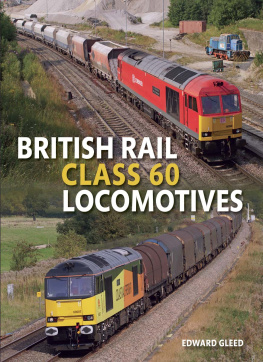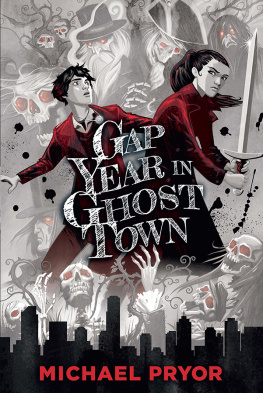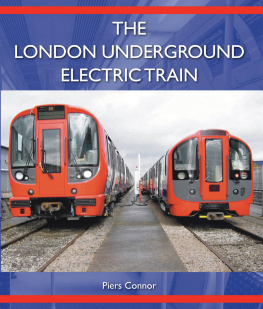
First published in 2016 by
The Crowood Press Ltd
Ramsbury, Marlborough
Wiltshire SN8 2HR
www.crowood.com
Edward Gleed 2016
All rights reserved. No part of this publication may be reproduced or transmitted in any form or by any means, electronic or mechanical, including photocopy, recording, or any information storage and retrieval system, without permission in writing from the publishers.
British Library Cataloguing-in-Publication Data
A catalogue record for this book is available from the British Library.
ISBN 978 1 78500 150 5
CONTENTS
DEDICATION
For my Dad.

The peace and tranquillity of the countryside is momentarily shattered as DBS Class 60 No. 60092 thunders through Wollaston atop 6B13 RobestonWesterleigh on a very hot 5 July 2013. EDWARD GLEED
ACKNOWLEDGEMENTS
Over the years the Class 60s have been much maligned, perhaps due to erroneous or misinterpreted information, and I hope this book will redress the balance. The rail industry now has a class of locomotives that is more than fit for purpose, and to quote a phrase from one of the British Rail Class 60 publicity videos, The power to move mountains is certainly one that has resonance.
British Rail Class 60 Locomotives has taken a number of years to complete. It has been a very fulfilling project, but it would not have been possible without the valuable assistance of many individuals, family members, friends and organizations, to all of whom I owe a huge debt of gratitude. I would like to commence by thanking most sincerely all those who have contributed to this book in any way, either by their own personal stories and recollections of the Class 60, or through their provision of photographic material. The main contributors are listed below; I apologize for those I have left out, but it would be impossible to name every individual. These include the following:
Richard Tuplin, editor at the Railway Herald for disseminating my initial request for photographic images, for his advice, and for proofreading various chapters.
John Stretton, for his advice and for sharing his vast collection of Class 60 photographs, especially during the construction of the Class 60; also for enabling me to contact individuals retired from Brush Traction, and individuals working in various train operating companies.
Former employees of Brush Traction (a part of the Wabtec Rail Group) for their valuable assistance regarding the construction, manufacturing process and history of the Class 60.
Paul Johnson at the National Archive at Kew for granting permission to reproduce historical information surrounding the Class 60s.
I would also like to extend my sincere gratitude to the many individuals within the following companies:
DB Schenker Rail UK for supplying photographic material.
Colas Rail UK for supplying details of the Super 60 refurbishment programme, and for photographic material for use in this book.
Network Rail Infrastructure Ltd, for granting permission to reproduce TOPS material in this book.
Special thanks are also due to the signalling staff at Bristol Area Signalling Centre, for their endless assistance in indicating the whereabouts of the Class 60 fleet.
Leighton Prado for his dedication in offering advice for this book.
Last, but most importantly, I owe a huge debt of gratitude to my family, especially to my wife Sharon and my children Charlotte and Lauren, for their endless support, patience and understanding, and for maintaining family life at home when I was away obtaining material for this book, as well as countless hours of proofreading.
PREFACE
My interest in railways started from a very young age. I was born in Shropshire in the market town of Ludlow, which lies 28 miles (45km) south of Shrewsbury and 24 miles (38km) north of the city of Hereford, both of which are quite important railway centres. Ludlow is situated approximately midway along the CardiffCrewe main line, which today is very busy with both passenger services and a myriad of freight workings; these on occasions are served by Class 60s, notably 6M76 MargamDee Marsh and return working 6V75 Dee MarshMargam. This particular diagram conveys steel products.
It was most fortunate that my parents purchased a bungalow with a beautiful garden, behind which the CardiffCrewe main line runs, affording an almost grandstand view of the railway. However, my sister and I were strictly forbidden to go over the boundary fence, or to cross the railway near our home using what is still known today as the 49 Steps Crossing, steeply graded steps leading up from the road on to the foot crossing. At the top of the steps it is virtually impossible to see trains coming up from Hereford, and users of the crossing have very little warning at all of any oncoming trains: when drivers sound their warning horn at the pre-set distance, the train is at the crossing within a matter of seconds. Trains coming from the Shrewsbury direction are not a great deal easier to see, either.

DB Schenker Rail UKs 60100 passing through the station of my birthplace of Ludlow whilst working 6V75, 09:30 Dee MarshMargam steel on 29 September 2014. EDWARD GLEED
At the age of six I had my first electric train set, given to me by my parents as a Christmas present. I still own that beloved GWR Pannier tank locomotive with two Great Western Mk1 chocolate and cream coaches, although alas the oval track has long gone; but this gift represented a pivotal moment in my interest in model railways. Then at the age of nine, I started what many schoolboys did at that time trainspotting! There was much to see in those days on that line; the Class 33s were drafted in to replace the ailing Class 25s on the CardiffCrewe passenger services, as the 25s were not powerful enough to make up lost time in the event of delay. Class 37s, 40s, 45s and 47s reigned supreme on freight services, and these services were quite frequent; indeed in the summer months I would peer out of my bedroom window at bedtime to see the northbound Severn Tunnel JunctionMossend (Glasgow) Freightliner service pass by. This train was usually headed by a Class 47, and on one occasion I remember No. 47 484 Isambard Kingdom Brunel hauling this working. Ironically this name would also be affixed to No. 60 081, described in morning, and even the occasional Class 31 could put in an appearance.
My father was born in Bristol, and following his retirement, we returned there in the summer of 1983 when my interest in railways intensified. My secondary school was ideally situated to sustain my interest in railways, as it was in viewing distance of the main line from Bristol Temple Meads to Exeter. I was always interested in seeing which locomotive was hauling the lunchtime departure to Manchester Piccadilly, and more often than not it was a Class 50. I would also go on cycle rides with my friends to Winterbourne, Coalpit Heath, Bristol Parkway, and on occasions Bristol Temple Meads, which enabled me to see Classes 50 and 56, locomotives I had only seen in my railway books and magazines when I was living in Ludlow. HSTs (High Speed Trains) were never seen in the Ludlow area, though they continue to depart from Bristol St Philips Marsh HST depot and run empty stock to Hereford to form one of the HerefordPaddington services. My first sighting of a HST was at Bristol Temple Meads, which was a truly momentous occasion.
Next page











